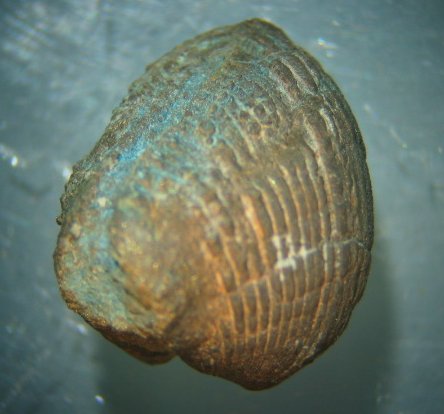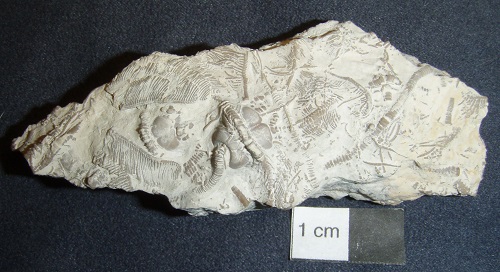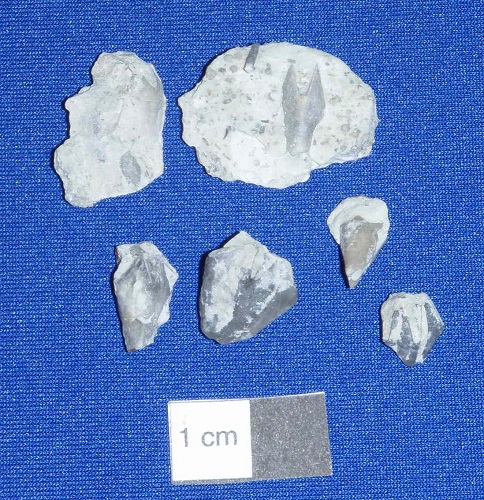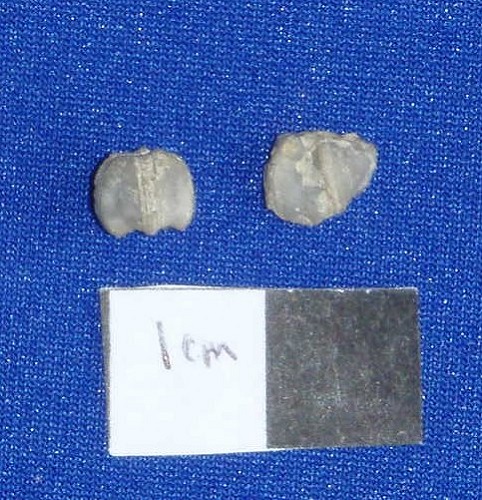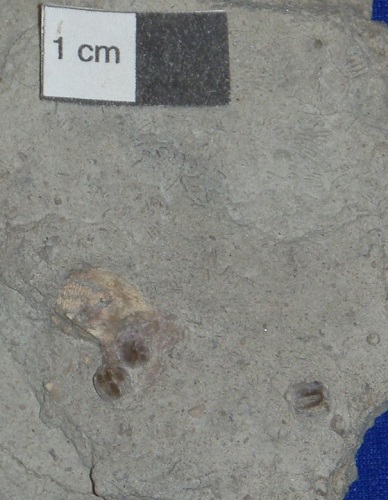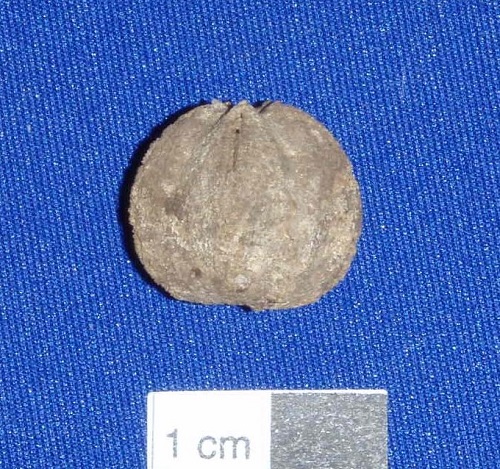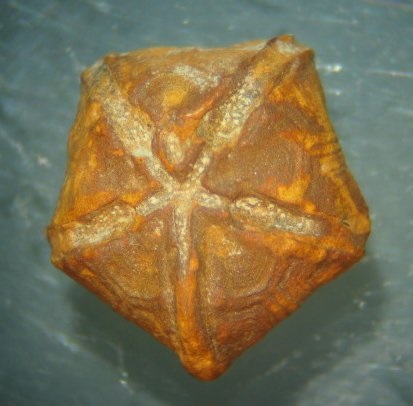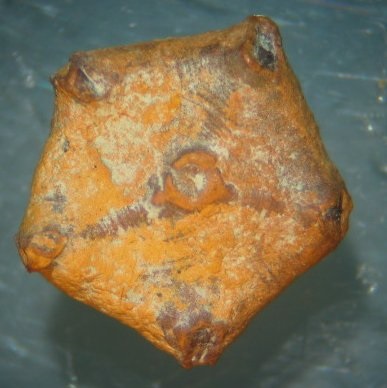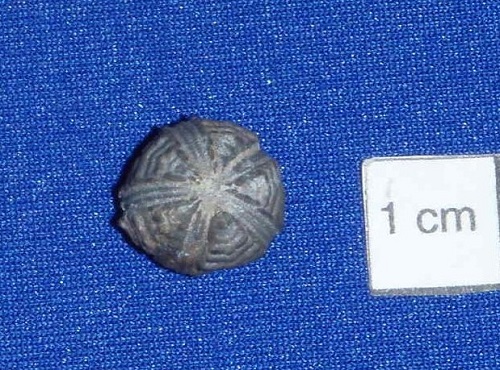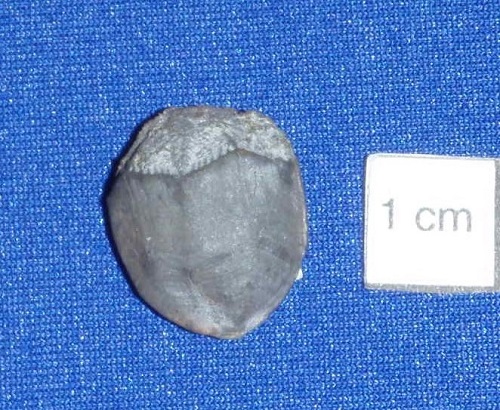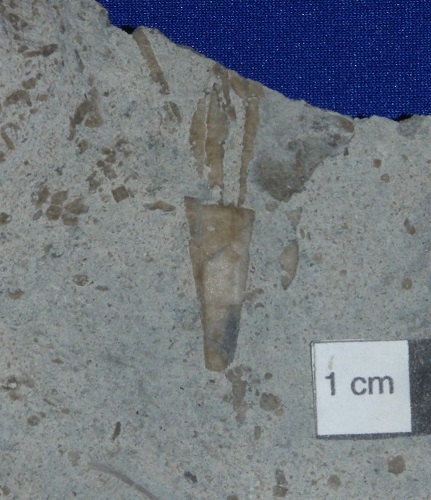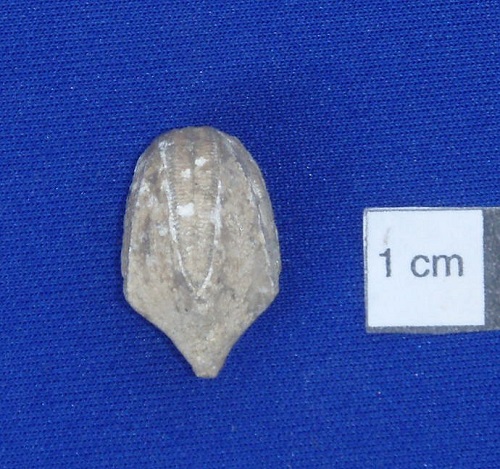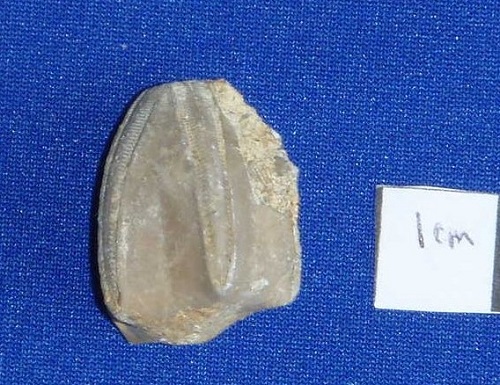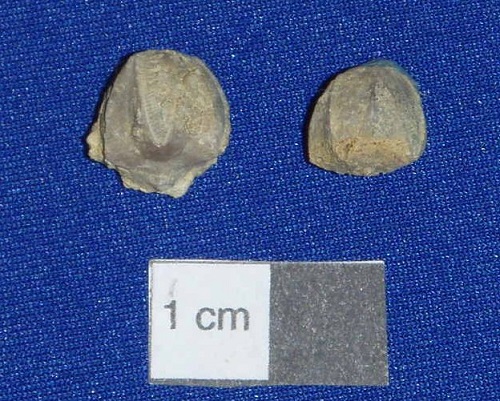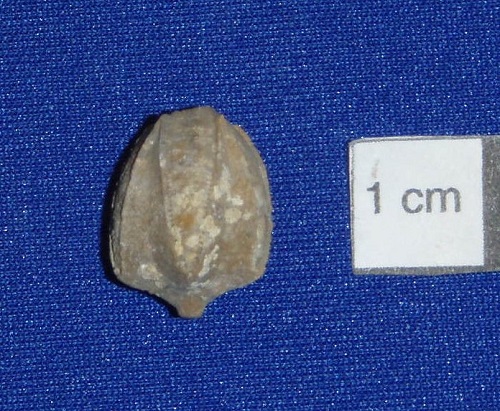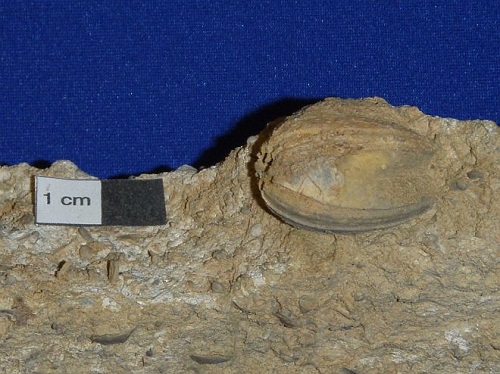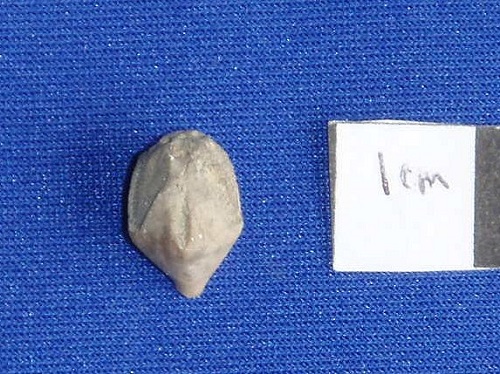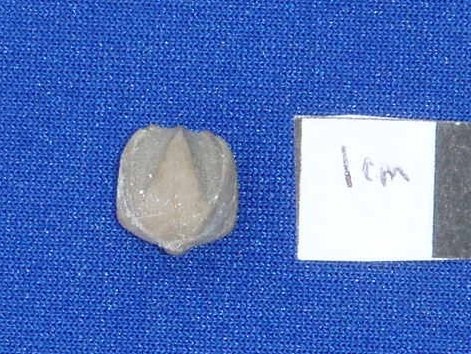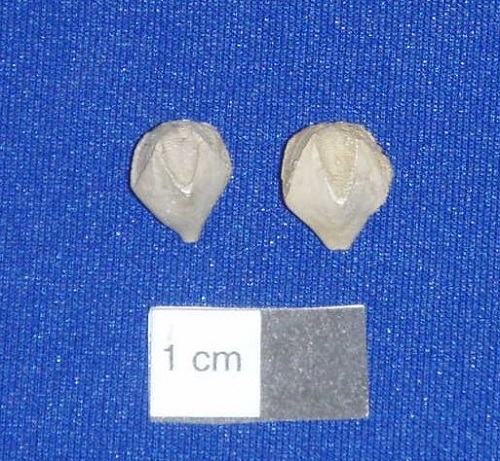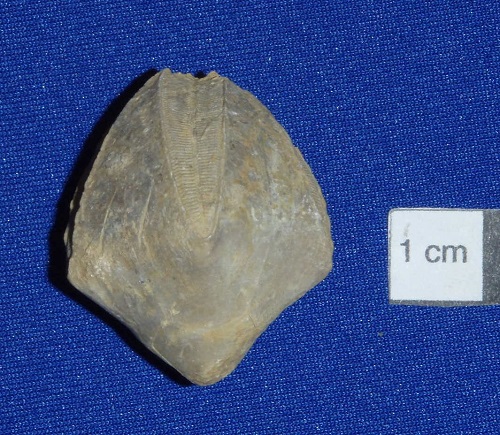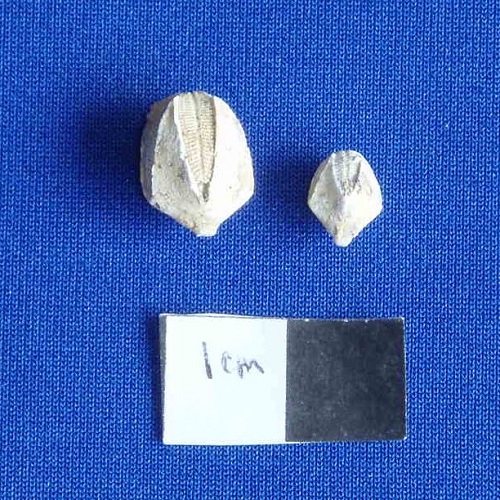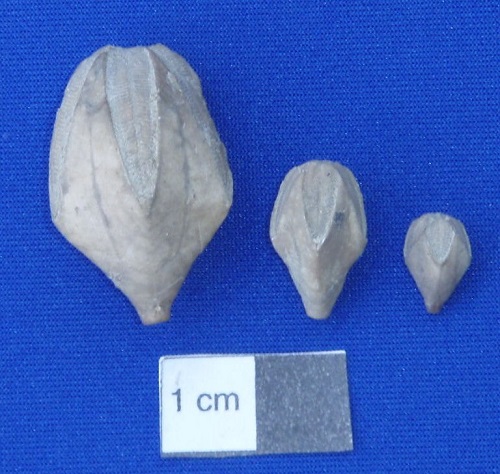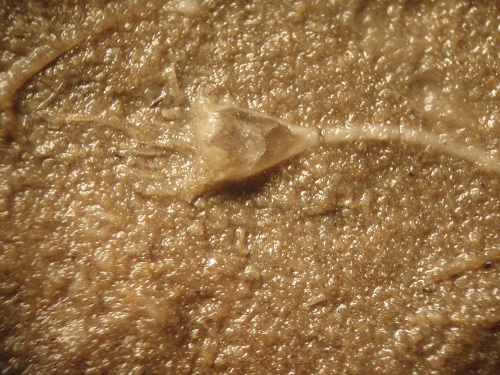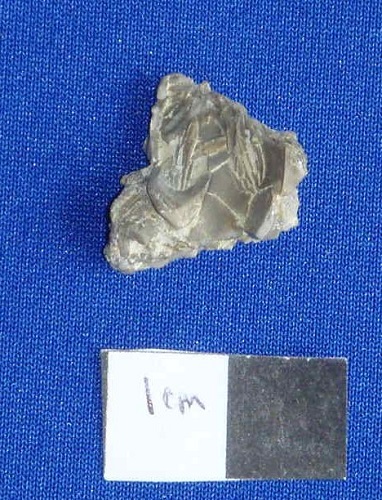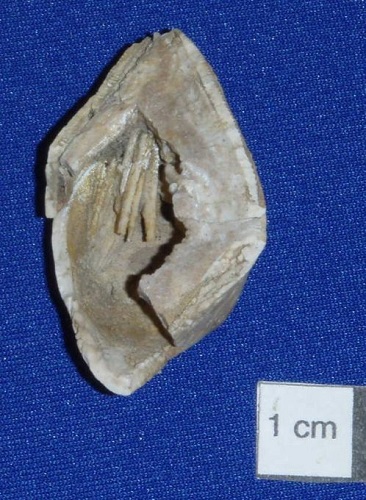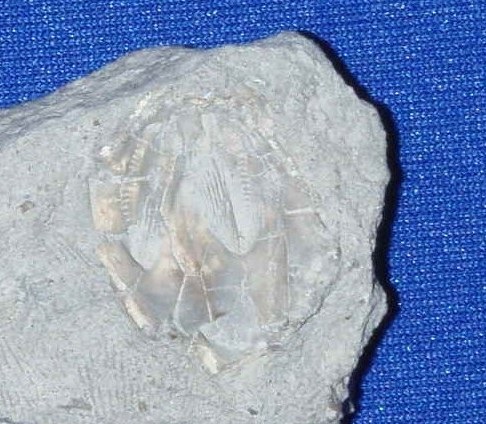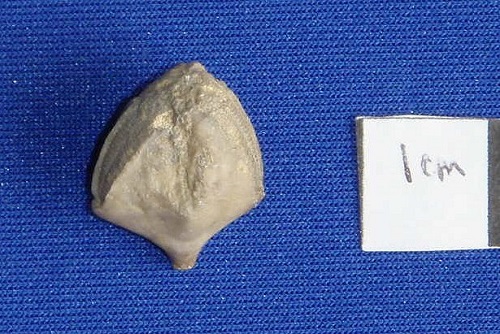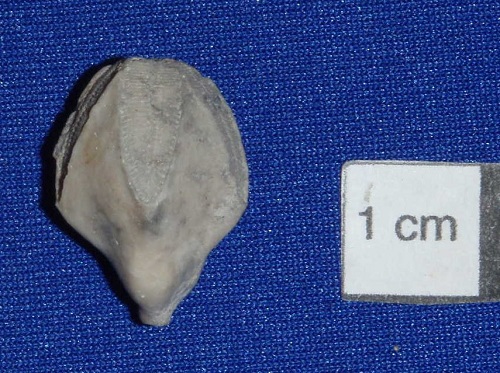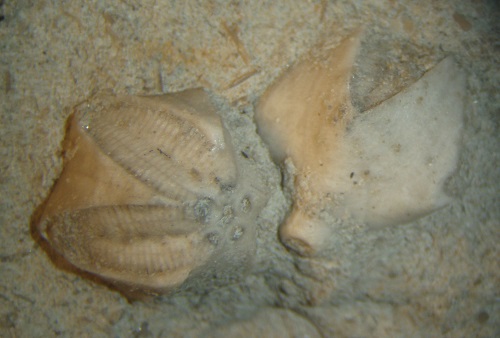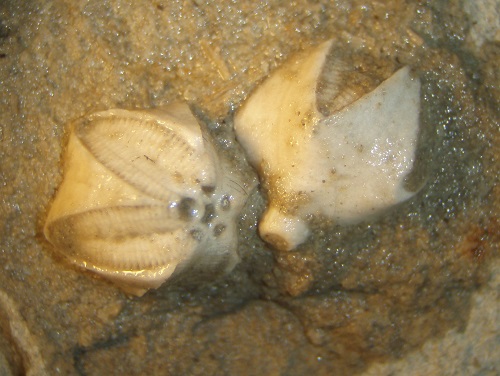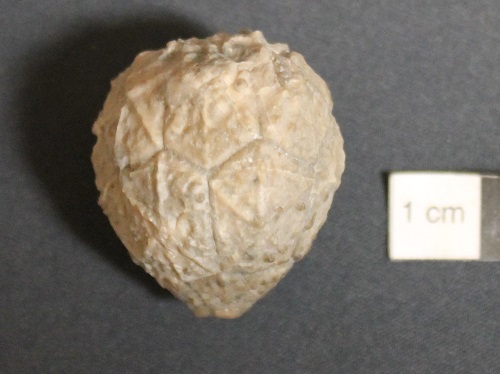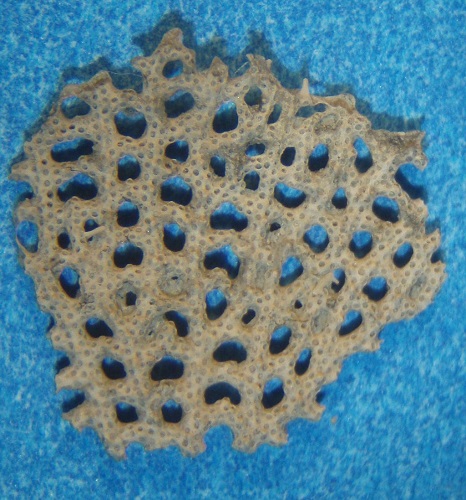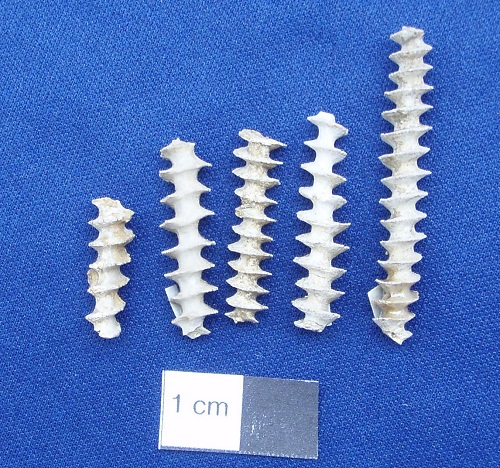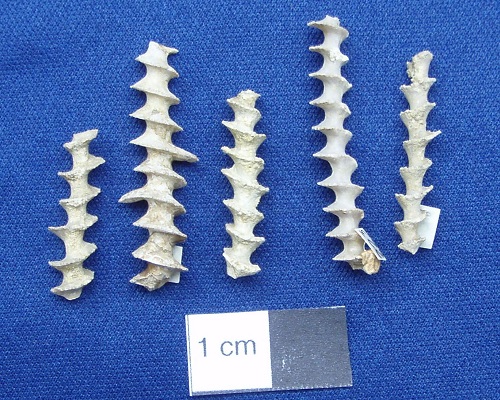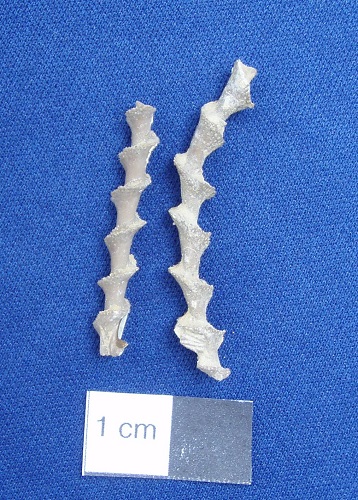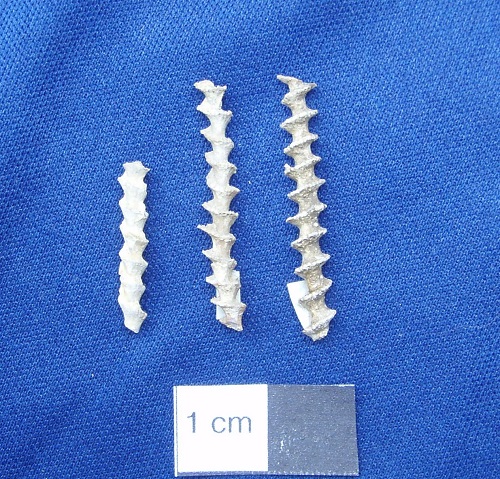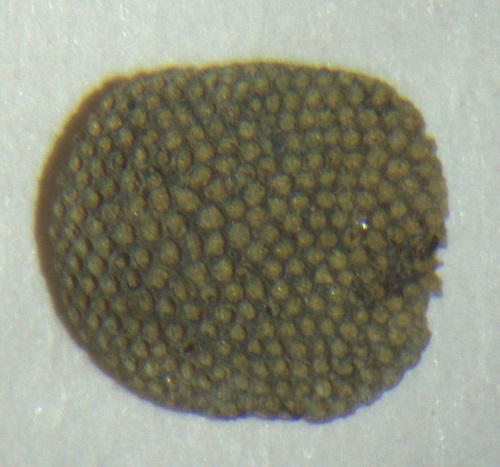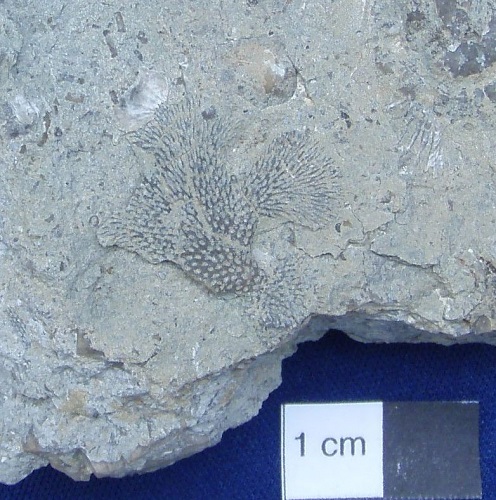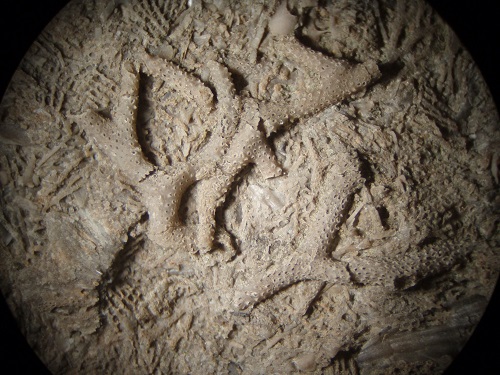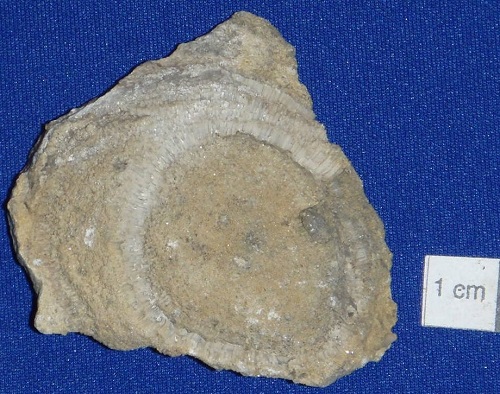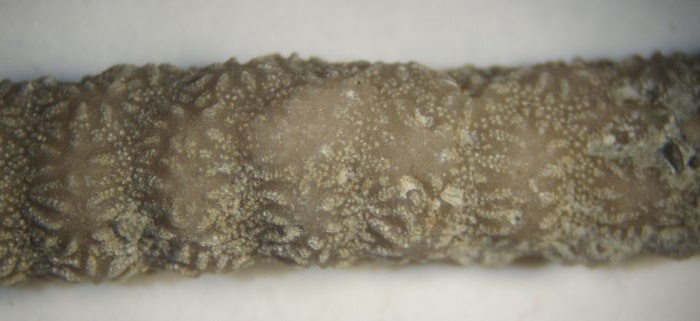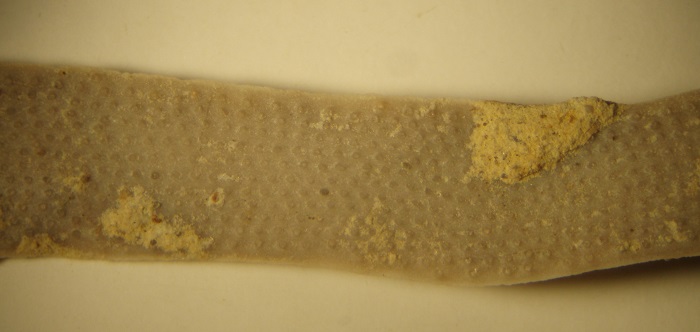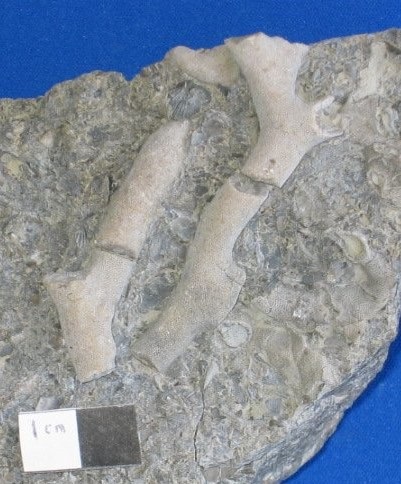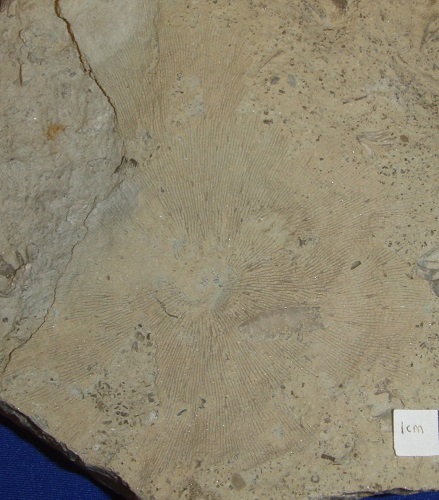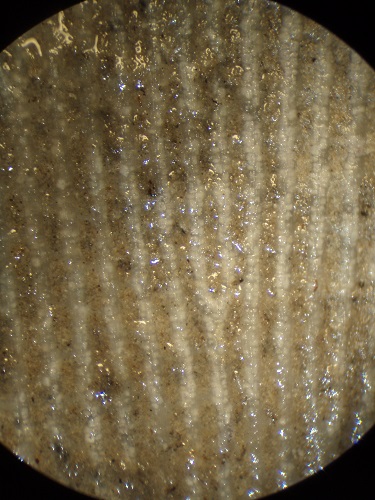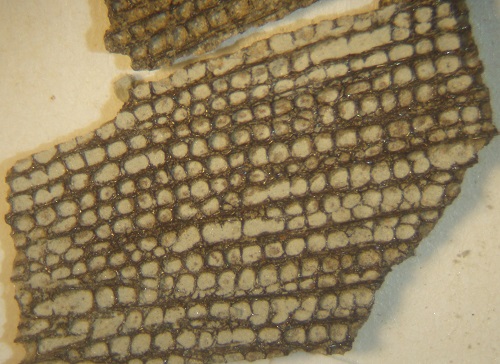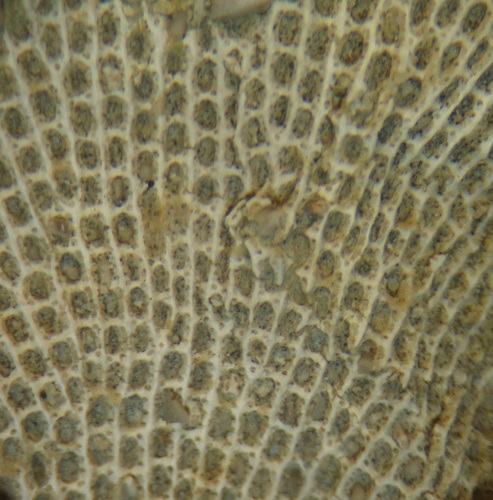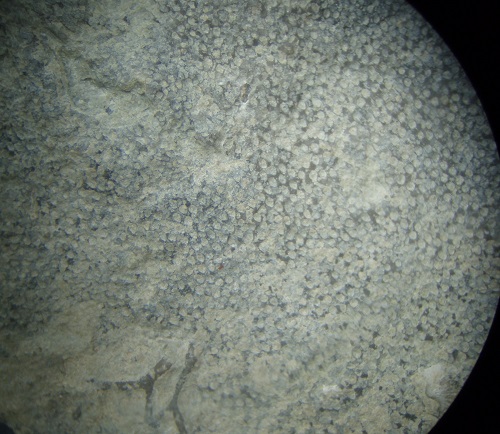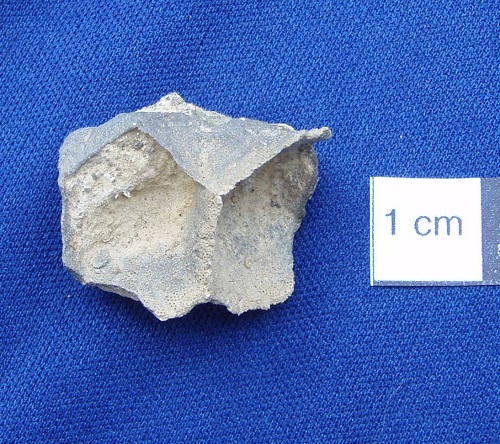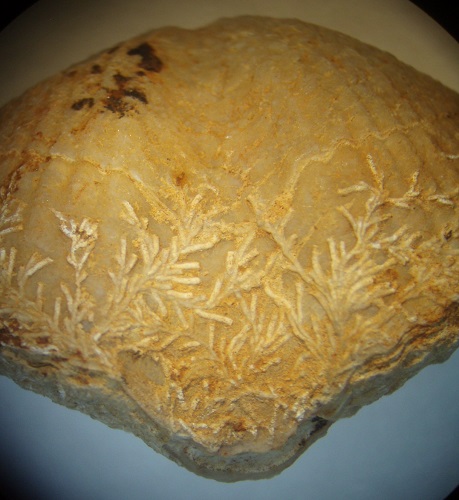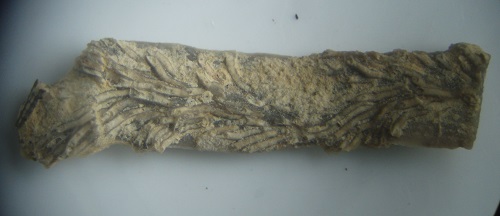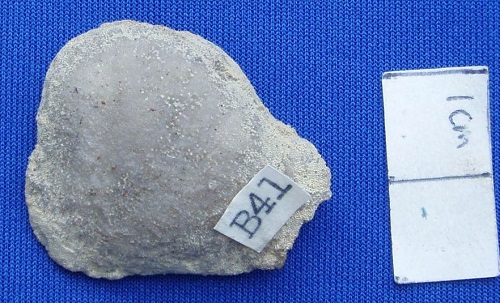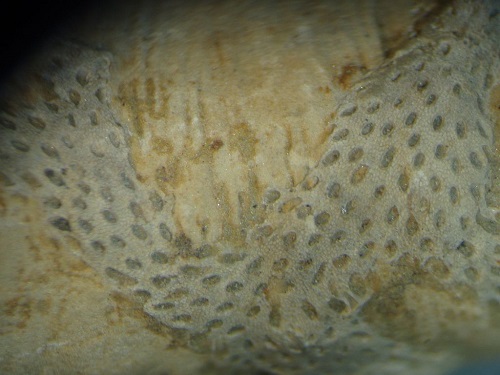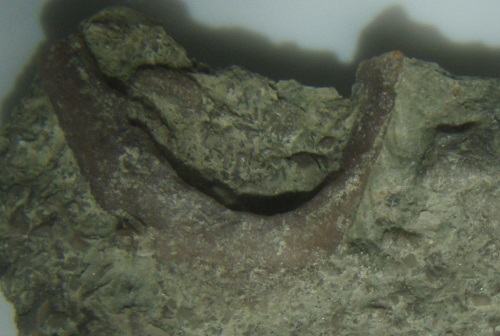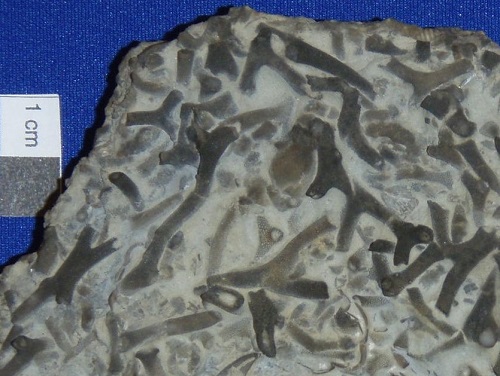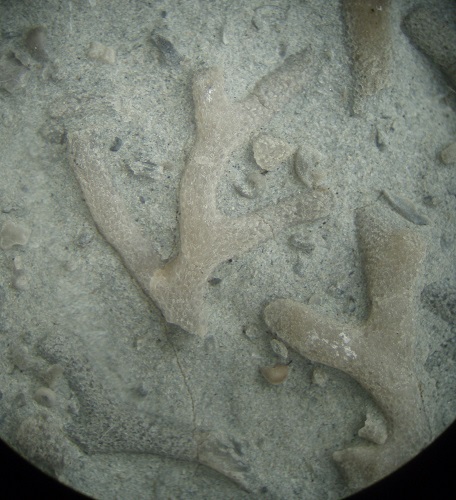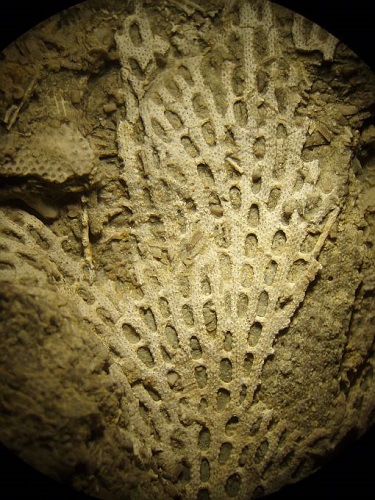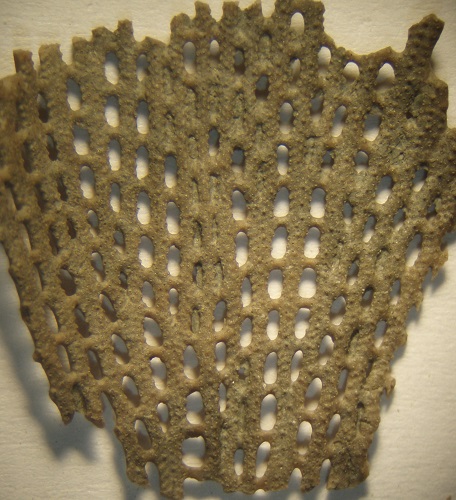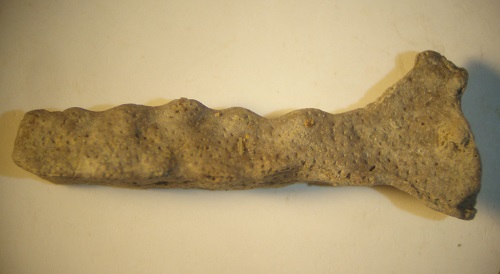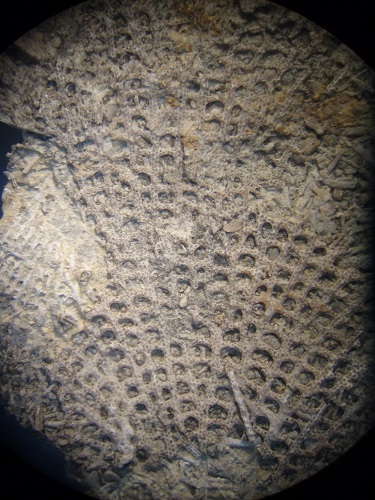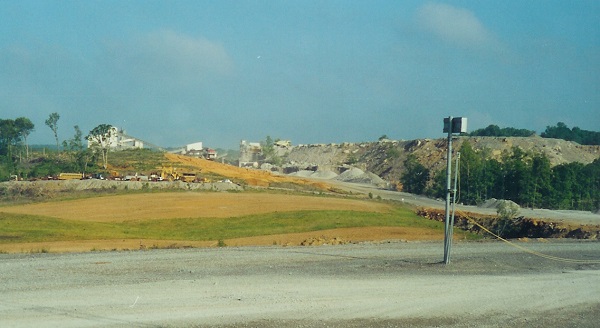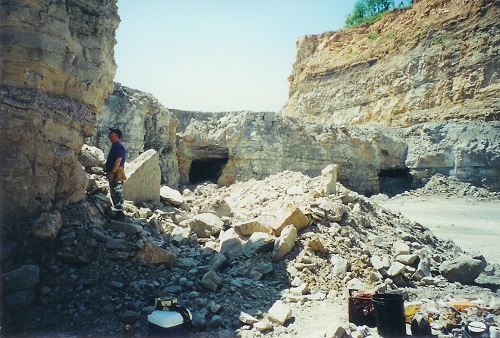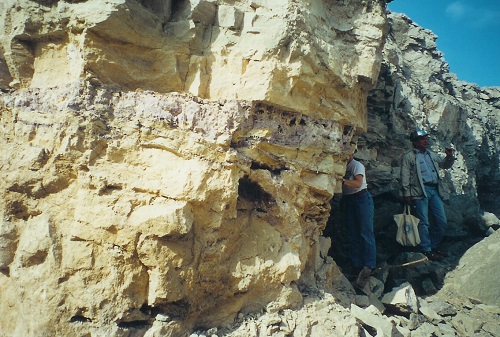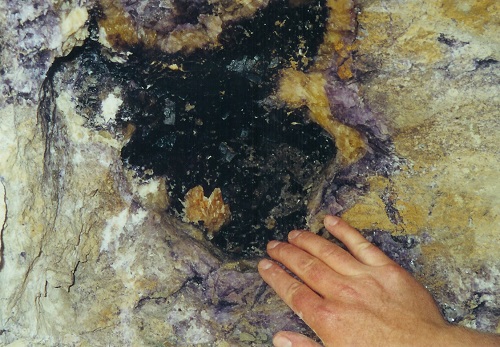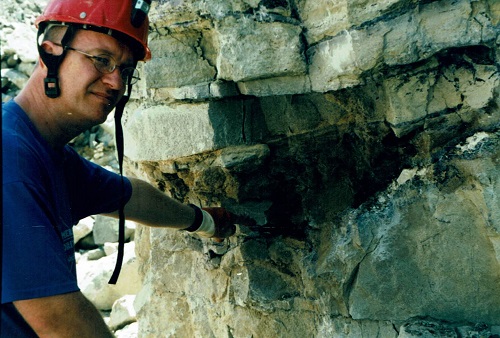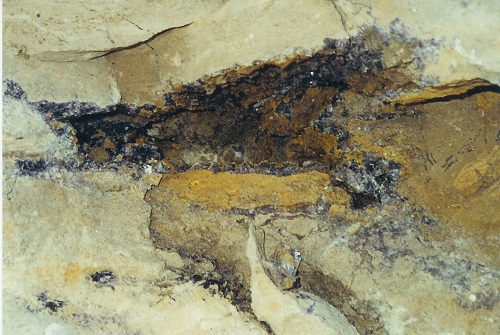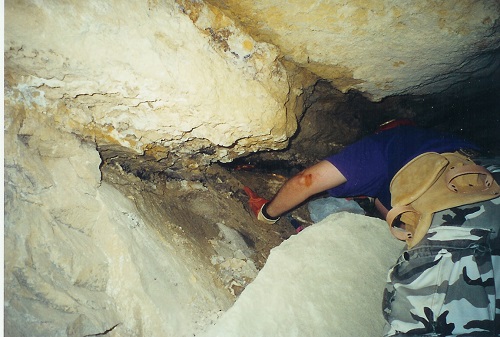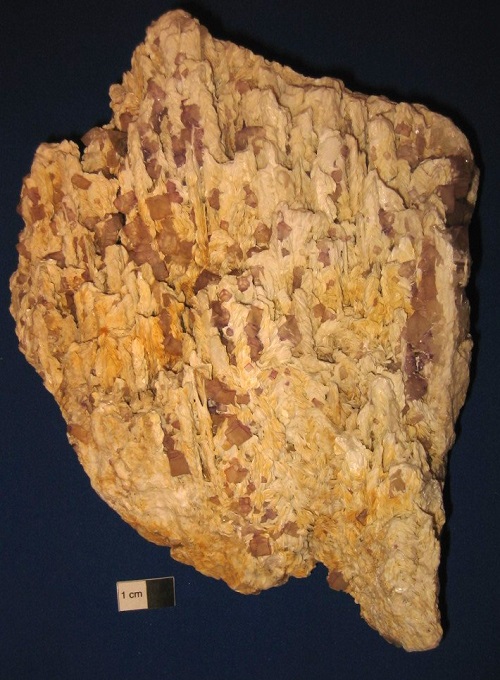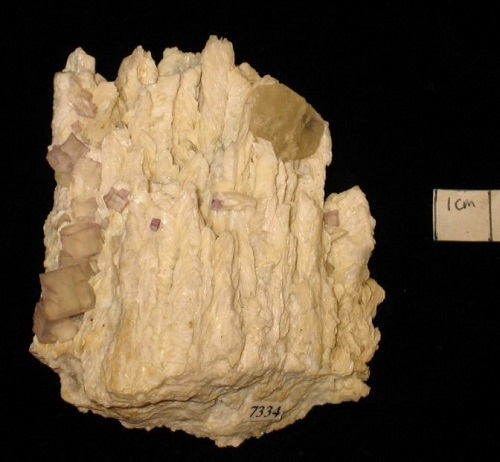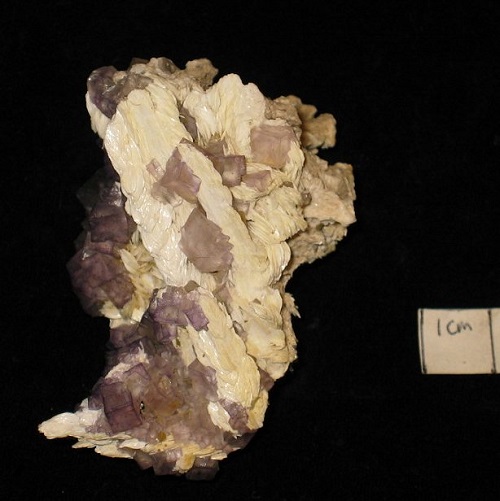Mollusks are the most abundant “shell” on a beach or riverbank. Modern cephalopods include squid, octopus and nautiloids. They are (and have always been) strictly marine. Gastropods (snails) live in the greatest diversity of ecosystems – marine, fresh & brackish water and on land. Clams are similar except for land. Monoplacophorans & scaphopods are exclusively marine. Rostroconchs are the only extinct class of mollusks.
Mollusk Photos (organized by class)
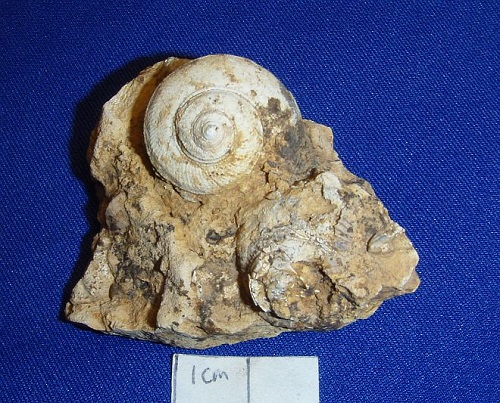
Preservation: C = Calcified, Ph = Phosphatic, P = Pyritized, S = Silicified, 1= w/o, matrix, 2 = w/ matrix
CEPHALOPODS Period Location Preservation
NAUTILOIDS
Dawsonoceras amycus Middle Silurian IN C,2

Michelinoceras sp. – Coral Ridge Member, New Providence Shale, basal Middle Mississippian, Jefferson Co., KY – P,1
Ovoceras oviforme (or Acleistoceras?) – Sellersburg = North Vernon Limestone, Clark Co., Indiana – S,1
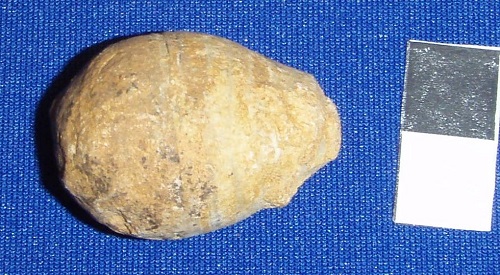
Treptoceras duseri (Hall & Whitfield) – Ubiquitous in the Upper Ordovician of the Tri-state area (IN, KY, OH), C,1,2
To be determined – large Devonian coiled nautiloid. Extremely rare, this specimen was found at the Speed Quarry in the Jeffersonville Limestone, Middle Devonian.
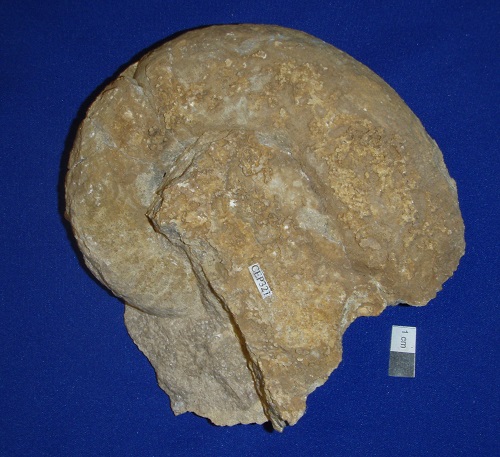
GONIATITES
Cantabricanites greenei (Miller) – Coral Ridge Member, New Providence Shale, basal Middle Mississippian, Jefferson Co., KY – P,1
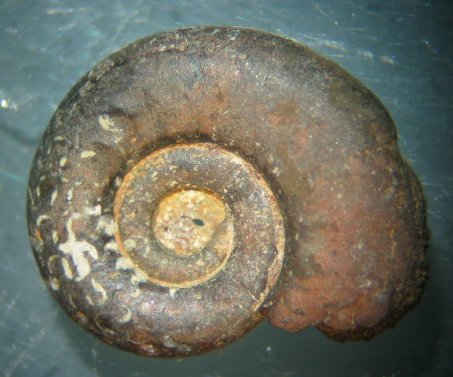
Polaricyclus ballardensis (Work & Mason) – Coral Ridge Member, New Providence Shale, basal Middle Mississippian, Jefferson Co., KY – P,1
Polaricyclus conkini (Work & Mason) – Coral Ridge Member, New Providence Shale, basal Middle Mississippian, Jefferson Co., KY – P,1
AMMONITES & BELEMNITES
Actinocamex verus (1) Cretaceous United Kingdom C,1
Baculites sp. Cretaceous Texas C,1
Belemitella americanus Jurassic Wyoming C,1
Hastites sp. (baculites) Lias, Early Jurassic Portugal C,1
Hildoceras bifrons ” ” ” Portugal C,1
Unidentified ” ” ” Portugal P,1
GASTROPODS/MONOPLACOPHORANS Period Location Preservation
Bellerophon gibsoni Middle Mississippian KY C,1
Bembexia sulcomarginata Middle Devonian IN S,1,2
Cyclonema sp. Upper Ordovician IN, KY C,1,2
Crytolites carinatus (Monoplacophoran) Upper Ordovician KY C,1
Glabrocingulum ellenae (Conkin), Coral Ridge Member, New Providence Shale, basal Middle Mississippian, Jefferson Co., KY – P,1 (type locality)
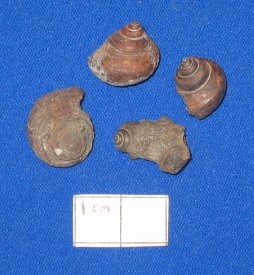
Globularia umbilica Upper Cretaceous MS C,1
Liospira macula Upper Ordovician KY C,1,2
Lophospira medialis Middle Ordovician KY S1,2
Lophospira biseriatus? Upper Ordovician KY C,1,2
Loxonema sp. Middle Ordovician KY S,1,2
Loxonema sp. – Coral Ridge Member, New Providence Shale, basal Middle Mississippian, Jefferson Co., KY – P,1
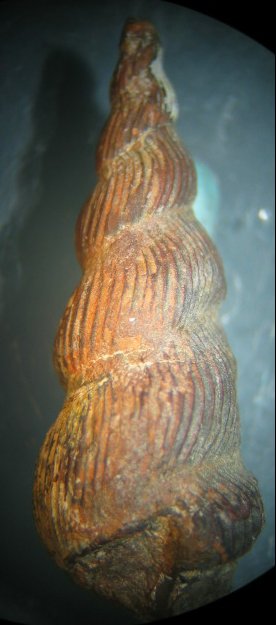
Paupospira bowdeni Upper Ordovician KY C,1,2
Natica tigra (1) Miocene Poland C,1
Naticonema lineata Middle Devonian IN C,1
Platyceras (Orthonychia) acutirostre Middle Mississippian KY C,1,2
Platyceras spp. Middle Devonian IN,KY C,2 (variable avail.)
Platyceras (Platystoma) niagarense Middle Silurian IN C,1,2
Pleurotomaria sp. Kimmerdgian, Late Jurassic Portugal C,1
Sinuitina annaea (Conkin) – Monoplacophoran – Coral Ridge Member, New Providence Shale, basal Middle Mississippian, Jefferson Co., KY – P,1 (type locality)

Sinuites cancellatus (Monoplacophoran) Upper Ordovician KY C,1,2
Sphenosphaera troosti Middle Ordovician KY S,1,2
Strophostylus cyclostomus Middle Silurian IN C,1,2
Trepispira sp. – Coral Ridge Member, New Providence Shale, basal Middle Mississippian, Jefferson Co., KY – P,1
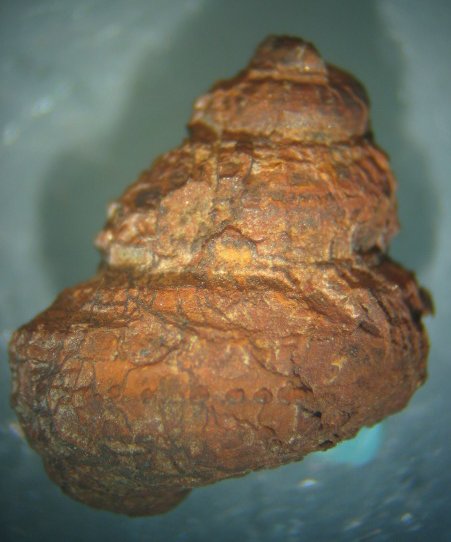
Turbonopsis shumardi Middle Devonian IN C,1,2 & impressions in stroms
Turretilla mcnairyensis Upper Cretaceous MS C,1
BIVALVES (CLAMS) Period Location Preservation
Ambonychia spp. Upper Ordovician IN, KY C,1,2
Anomia argenta Upper Cretaceous MS C,1
Caritodens demissa Upper Ordovician IN, KY C,2
Crassatella vadosus Upper Cretaceous MS C,1
Ctenodonta sp. – Coral Ridge Member, New Providence Shale, basal Middle Mississippian, Jefferson Co., KY – P,1
Cycloconcha milleri Upper Ordovician IN C,2
Cypricardinia arata Middle Silurian IN C,2
Deceptrix filistriata Upper Ordovician KY C,1,2
Deceptrix cf. D. hartsvillensis Middle Ordovician KY S,1,2
Exogyra costata (Say) – Coon Creek Mbr., Ripley Formation, Upper Cretaceous, Union Co., Mississippi – C,1
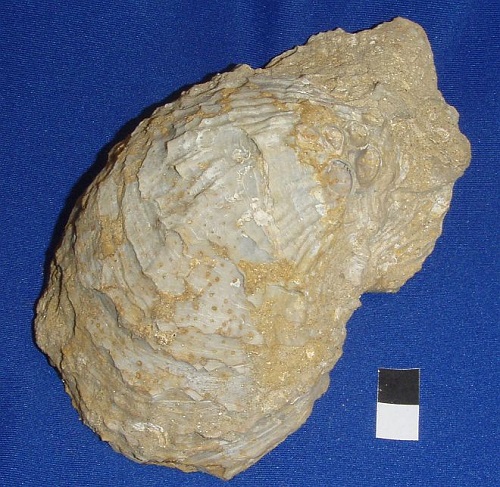
Limopsis meeki ” ” MS C,1
Limoptera cancellata Middle Devonian IN S,1,2
Lyrodesma conradi Upper Ordovician KY C,1,2
Modiolopsis sp. ” ” IN, KY C,2
Modiomorphia concentrica (Conrad), Sellersburg Limestone, Givetian, Middle Devonian, Clark Co., IN -S,2
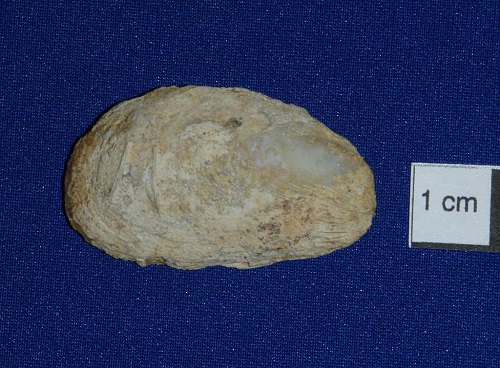
Myalina sp. Middle & Upper Mississippian IN, KY C,S,2
Myaina subquadrata Pennsylvanian Kansas C,1
Nucula percrassa Upper Cretaceous MS C,1
Nuculana australis ” ” MS C,1
Nuculana whitfieldi ” ” MS C,1
Nuculopsis sp. – Coral Ridge Member, New Providence Shale, basal Middle Mississippian, Jefferson Co., KY – P,1
Paracyclas elliptica (ohiense) Middle Devonian IN, KY C,S,1,2
Paracyclas liriata (rugosa) ” ” IN, KY S,1
Pecten sp. Miocene Oregon C,2
Phestia sp. – Coral Ridge Member, New Providence Shale, basal Middle Mississippian, Jefferson Co., KY – P,1
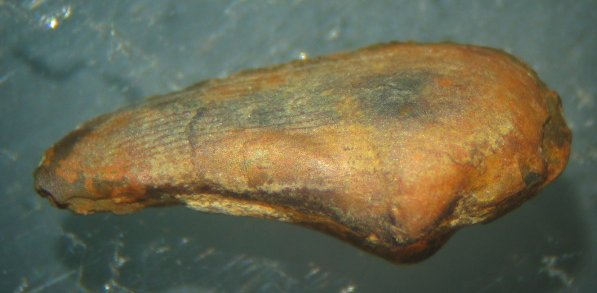
Pterinea brisa Hall – Waldron Shale, Middle Silurian, Clark Co., IN – C,2
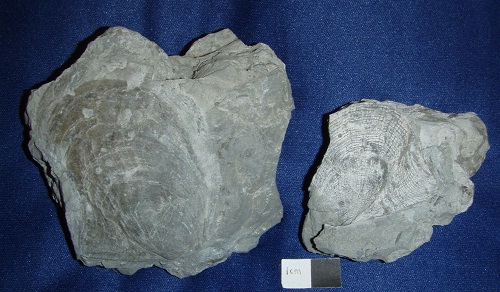
Toredo rectus Upper Cretaceous MS C,1
Vanuxemia gibbosa Middle Ordovician KY S,1,2
Internal casts Middle Devonian IN C,1
Mother of Pearl fragments Upper Cretaceous MS C,1
ROSTROCONCHS & SCAPHOPODS
Dentalium inornatum Upper Cretaceous MS C,1
Dentalium ripleyanum ” ” MS C,1
Hippocardia cuneus (Conrad) – Jeffersonville Limestone, Middle Devonian, Clark Co., IN, Jefferson Co., KY – C,1,2
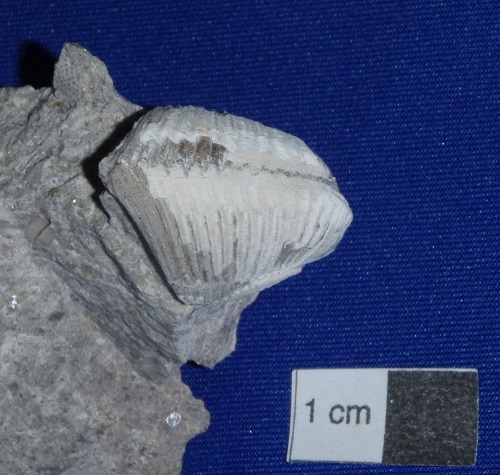
Pseuomulceodens cancellatum (Hyde) – Coral Ridge Member, New Providence Shale, basal Middle Mississippian, Jefferson Co., KY – P,1
